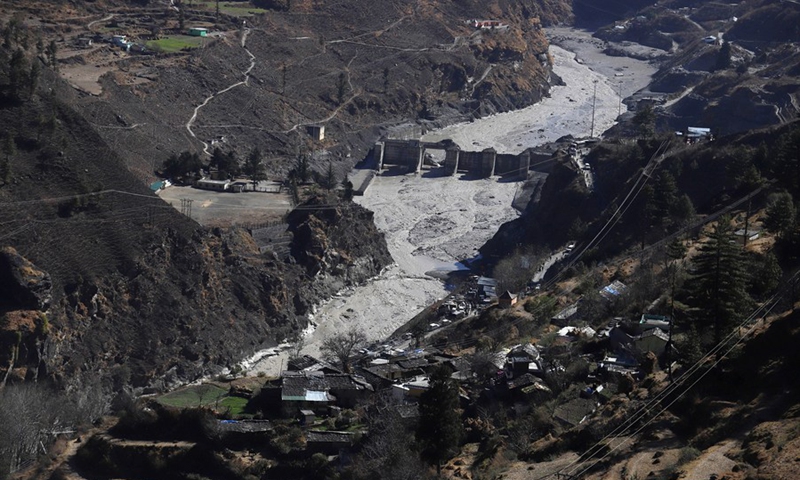A Chinese expert refutes as nonsense suspicions implying that the glacial lake burst in India could be the result of remotely controlled explosions conducted by China. He argued that the main reason for such glacier break is that the Indian military construction has damaged the ecological environment in the region.
Around 125 people were missing in northern India after a Himalayan glacier broke and swept away a small hydroelectric dam on February 7, according to Reuters.
The devastating flood had left at least 32 people dead, according to ABC News.
Such flash floods are not uncommon in the Himalayan region. The Himalayas have been warming at an alarming rate for years, melting ice long trapped in glaciers, soil and rocks, elevating the risk of devastating floods and landslides, noted the New York Times. The region’s ecosystem had become too fragile for large development projects.
“The ecological environment and permafrost disposal problems must be taken into consideration when building hydroelectric power projects in volatile areas,” Hu Zhiyong, a research fellow at the Institute of International Relations at the Shanghai Academy of Social Sciences, told the Global Times on Saturday, “But the Indian government ignored the objections of experts and the protests of local residents.”
What’s more ironic is that International Business Times, a US media outlet, published an article entitled “Chinese Sabotage or Glacial Lake Burst? Mystery Deepens Around Massive Himalayan Floods in India” on Monday, alleging that “some Indian defense scientists think the glacier burst could have been sabotage.” Without really naming China, it implied that “glacial lakes can be breached through remote-controlled explosions, with an aim to hit India’s infrastructure in the border areas.”
“The glacier breaks in India last week could not have been caused by China sabotaging nearby infrastructure. Instead, the Indian military has built several military installations in the area, which has exacerbated the melting of the glacier,” noted Hu, “In contrast, before the construction of the Qinghai-Tibet Railway, China had carried out many permafrost tests and obtained a large number of first-hand data, which ensured the ecological safety along the railway.”
“Indian government never reflects on its own destructive actions whenever there is a problem. Instead, it usually turns to blame China in order to avoid being held accountable by opposition parties and people of the country,” Hu remarked.
Photo taken on Feb. 8, 2021 shows a view of a damaged dam near the Dhauliganga hydro power project after a glacier burst in India’s northern hilly state of Uttarakhand. Photo: Xinhua



